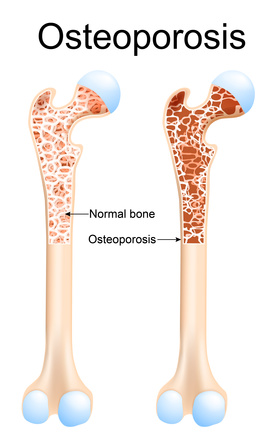
Boost Your Brain Power
March 19, 2025
Immune Related Sub-fertility
April 5, 2025Baby Colic – Natural Solutions for Colic Relief

Is your baby fussy, crying, or difficult to soothe? Colic affects 1 in 4 babies, making it one of the most common reasons for medical visits in infancy. It is also a leading cause of early breastfeeding cessation and an incredibly stressful experience for parents.
Simply being told to ‘stay calm and wait it out’ is not enough. Emerging research reveals that much of the traditional colic advice is outdated. In this blog, we explore the latest science behind colic and natural approaches to finding relief.
What is colic?
Colic occurs in otherwise healthy babies, meaning it is not a disease but rather a condition with multiple presenting symptoms. Because the exact causes remain unclear, colic is typically diagnosed based on signs and symptoms alone. This lack of clarity can lead to confusion—is it colic, reflux, or a cow’s milk allergy? Since these conditions share overlapping symptoms, parents often receive vague advice like ‘try this and see if it helps’. As a result, colicky babies are often overprescribed medication, while anxious parents turn to an array of commercial solutions in search of relief (1).
Contributing Factors
Fortunately, scientific research is shedding new light on the causes of colic. At its core, colic seems to be linked to the proper maturation of the gut and nervous system. The contributing factors can be grouped into three main categories:
- Gut Imbalances – Studies suggest that colicky babies have a different gut bacteria composition compared to non-colicky babies (2). Specifically, they tend to have bacteria associated with inflammation (leading to cramping and pain) and excess gas (causing bloating and fussiness) (3), while also showing lower levels of beneficial bacteria, such as bifidobacteria. Breastfeeding appears to play a key role in promoting a healthy gut microbiota in young babies (4). However, even breastfed babies can experience colic, indicating that additional factors are at play.
- Physical Restrictions – The physical pressures of birth can affect a baby’s cranial bones and fascial system, potentially exerting strain on key nerves (especially the vagus nerve, which regulates digestion), muscles, diaphragm, and organs. These restrictions can lead to challenges with essential functions, including feeding (latching, swallowing, sucking), digestion (gas, reflux, spitting up, hiccups), bowel movements (straining, loose stools), sleep (difficulty settling or being put down), and even breathing difficulties (5).
- Prenatal and Birth-Related Stress – Early experiences can shape a baby’s sense of safety and influence behaviour (6). Factors such as maternal stress during pregnancy and certain perinatal events—such as frequent medical interventions, medications, maternal separation, or infections—can contribute to an unsettled nervous system (7). This may manifest as fussy-like behaviours like excessive clinginess, constant need to be feed or soothed, resisting being laid down and heightened sensitivity to light, noise, or sudden movement.
Therapeutical approaches
There is no single way to help with colic. Effective support involves addressing the various factors that contribute to colic. Below a list of therapeutical approaches with growing evidence.
Nutritional support for breastfeeding women
For colicky breastfed babies, removing certain foods from the mother’s diet—such as dairy (8), cruciferous vegetables (9), and FODMAPs* (10)—may help reduce crying, gas, and inflammation. Breastmilk rich in healthy fats (omega-3 PUFAs**) is associated to lower distress in babies, likely due to the role of PUFAs in supporting the growth of beneficial gut bacteria, reducing inflammation, and promoting brain development (11).
Given the challenges of this period, consulting a nutrition expert can help mothers make tailored dietary adjustments.
*fermentable oligo, disaccharides, monosaccharides and polyols-a group of small carbohydrates (sugars) found in certain foods that can be hard for babies to digest.
** poly-unsaturated fatty acids- a type of healthy fats needed for brain and eye development in babies.
Nutritional support for colicky babies
Baby probiotics can help alleviate colic symptoms and promote long-term benefits for the developing gut. Certain bifidobacteria and lactobacilli strains may reduce inflammation, inhibit harmful bacteria, aid in lactose digestion, and regulate bowel movements (12). However, the effectiveness of probiotics depends on selecting the appropriate bacteria for the specific issue. For instance, L. reuteri (found in Biogaia) is most effective for breastfed babies (13). Additionally, herbal remedies like fennel, chamomile, anise, and melissa can soothe colicky babies and are generally considered safe (14).
Consulting a nutrition expert may help find the best combination of these nutritional supplements.
Manual therapies
Manual therapies, such as craniosacral therapy (CST) has shown effectiveness in reducing colic symptoms (15). CST focuses on gently relieving birth-related compressions, allowing better movement of tissues and cranial bones. This in turn can improve discomfort and bodily functions such as digestion or sleep. In addition, the craniosacral therapist’s nurturing touch can help release the stress associated with strong birth/postnatal experiences providing safety cues and reassurance for the baby’s nervous system. After a session, parents have reported their babies being more relaxed, crying less, having better digestion and being more content and restful (16).
Colic can stem from various causes and affects each baby differently. Paying attention to your baby and identifying potential contributing factors can help find the right solutions. You are not alone, if you need extra support do not hesitate to seek expert guidance to address colic naturally.
Free Resources
Blog – Baby Colic: root causes, natural cures,
Baby colic questionnaire – determine the next steps to resolve your baby’s colicky symptoms
References
- https://pghn.org/DOIx.php?id=10.5223/pghn.2019.22.3.207
- 10.1542/peds.2012-1449
- https://doi.org/10.1038/s41598-017-11509-1
- https://doi.org/10.1017/S2040174420000227
- https://doi.org/10.3389/fnins.2021.721605
- https://doi.org/10.3389/fnins.2021.721605
- https://doi.org/10.1002/icd.688
- https://doi.org/10.1542/peds.2005-0147
- https://doi.org/10.1016/s0002-8223(96)00013-2
- https://doi.org/10.1111/apt.15007
- https://doi.org/10.3390/nu11122964
- https://doi.org/10.3390/microorganisms9122415
- https://doi.org/10.1542/peds.2017-1811
- https://doi.org/10.1016/j.pedn.2022.12.002
- https://doi.org/10.1016/j.ctim.2022.102885
- https://doi.org/10.1136/bmjopen-2019-035405
This article was written by Belén Vázquez, Baby colic specialist.

